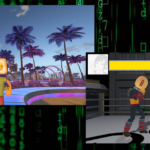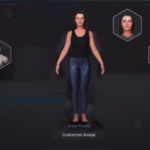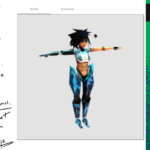Your digital identity is more than just your avatar, because it’s something that connects all your online activity together into one passport. It’s all about bringing the concept of identity into the digital world through data and visuals. A digital identity is definitely more than just an avatar and surely tells a lot more as well.
Who you are in the real world is defined by your passport and social security number. Wherever you go, authorities and gatekeepers will be able to confirm you have the required age to drink a beer, are the person who bought a plane ticket and are legally allowed to drive a car. Even though those systems could end up to be tokenized in the future as well, we’re likely still far away from that.
However, concert or cinema tickets, reservations for an exclusive restaurant or subscriptions to a museum could very well be tokenized already. These types of identifiers don’t require lots of legal background. If required, organizations could always ask for an ID card. Long story short, in the real world your identity is very important and allows gives you access to certain services.
Your wallet as a passport
In the blockchain landscape we often talk about identity. Recently Polygonal Mind launched their Crypto Avatars project. They created one-of-a-kind digital characters that the owners can use in virtual worlds like Somnium Space, Decentraland and VR Chat. These avatars provide one visual look for one individual in multiple virtual worlds. However, these avatars are merely a visual representation of the true digital passport.
I believe the concept of visual representation is the second step in creating an identity in the metaverse. The first step is an interoperable multi-chain passport in which users store all their digital identities and/or cryptocurrency wallets. A cryptocurrency wallet can already be seen as a kind of digital passport, because it tells gatekeepers all kinds of information. It shows the type of games and crypto art you like, the events you visited and your wealth.
However, a cryptocurrency wallet is generally tied to one blockchain. In addition it doesn’t necessarily reveal any information about your real identity, unless you’ve bought a domain name with your name in it. On top of that most people have multiple wallets, so one wallet never tells the whole story. But it’s a fact that wallets can tell something about your tastes, activity, preferences, time zone, your nationality and identity.
I have three different browser extensions to connect my wallets to a certain app. We need to merge all this in one interface, and allow smooth interoperability between these blockchains for sharing data. After that, we’re ready to move into visual representation.
The promise of interoperability
Crypto Avatars allow interoperability in different virtual worlds. So the owner of a certain identity avatar can use the same visual representation in for example Decentraland and Somnium Space. However, ideally we’d see every game developer tapping into open standards for avatars in games and virtual worlds. Right now someone can make a 3D character in Vroid and export a VRM file. Then import the VRM file into Blender, and then into engines like Babylon.JS, Unity, and Unreal. Jin wrote an interesting article about this. Metadata through for example ERC-1155 could determine characteristics like height, hair style and color, eye and skin color etc. Based on this metadata, a game can generate a character that’s in style with the rest of the game.
However, in general we run into trouble when talking about interoperability. Exchanges move value between different blockchains without connecting the technology. However, right now we’re seeing some big things happening around decentralized finance. The hype train on the Ethereum blockchain is forcing other projects to hook up. For example, you can trade bitcoin on the Ethereum blockchain, because of Wrapped BTC (WBTC). In addition Wax recently announced their plans to link up with the DeFi trend on Ethereum.
Most games on the Enjin Platform allow the use of a couple of non-fungible tokens in multiple games. A player character from one game can be a sword in the other. Technically that’s the type of interoperability we should be looking for, but then it should be interoperable between different blockchains using one digital identity. This could mean that I use my green-skinned avatar with blue hair and yellow eyes in the voxalized world of The Sandbox, but also as my player profile in Splinterlands. With standardized avatars this could works across different blockchains.
To achieve all this we need the following:
- one interface to connect to multiple blockchains
- standardization of digital identity through avatar metadata
- decentralized storage of avatars for use with compatible game engines
- the ability the smoothly recognize avatar ownership no matter which chain you’re using




